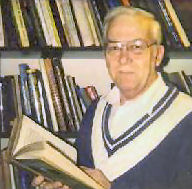History buffs, genealogists, and the just curious can enjoy browsing Delaware Place Names published as U.S. Geological Survey Bulletin 1245 in 1966. It had six authors, none of whom are otherwise known in Delaware letters. The 124-page book is usually seen in paperback. It lists towns, settlements, rivers, creeks, marshes, beaches, hills, harbors, and other geographic features that have names. Not unexpectedly, the word "mountain" does not appear in the glossary.
For each feature, a description and location are given, including latitude and longitude. For dwelling places, populations and political importance are noted. The origin of a place name is given if it is known, and the authority is cited. Some of these name origins are interesting.
In New Castle County today, Bear is a postal designation that stretches between the cities of New Castle and Newark and from I-95 almost to the C&D Canal forming ZIP codes 19701 and 19702. Originally Bear was just a settlement of 75 about 2.6 miles south of Christiana. It was named for Bear Tavern, used from colonial times to 1845. Later, the railroad had a Bear Station. Newark was once a 1,000 acre tract settled by Quaker Valentine Hollingsworth in 1688. He called it New Worke. He gave a small piece of land for a meeting house which was named Newark. Christina River was named on a 1655 map for Queen Christina of Sweden. Somehow the village got changed to Christiana.
Kent County's Dover was named by William Penn in 1683. It did not become Delaware's capital until 1777. Smyrna was Duck Creek but was renamed in 1806 for the Turkish city. The book gives no explanation. Harrington and Townsend were named for 19th Delaware political figures. Before the railroad in 1850, Townsend was a black community called Charleytown.
In Sussex County, Georgetown was planned in 1791 as a county seat exactly in the center. It was named for George Mitchell who supervised the layout. Lewes received its name from a borough in Sussex County, England, but the book gives no explanation of the names Seaford, Laurel, Bridgeville, or Dewey Beach or of the unusual spelling of the biblical Rehoboth. However Selbyville was named after its first postmaster. Delmar was founded in 1859 by the Eastern Shore Railroad. The name, of course, derives from it straddling the Delaware-Maryland border.
The book is not easy to find and is sometimes pricey.
Saturday, July 09, 2005
Subscribe to:
Posts (Atom)
